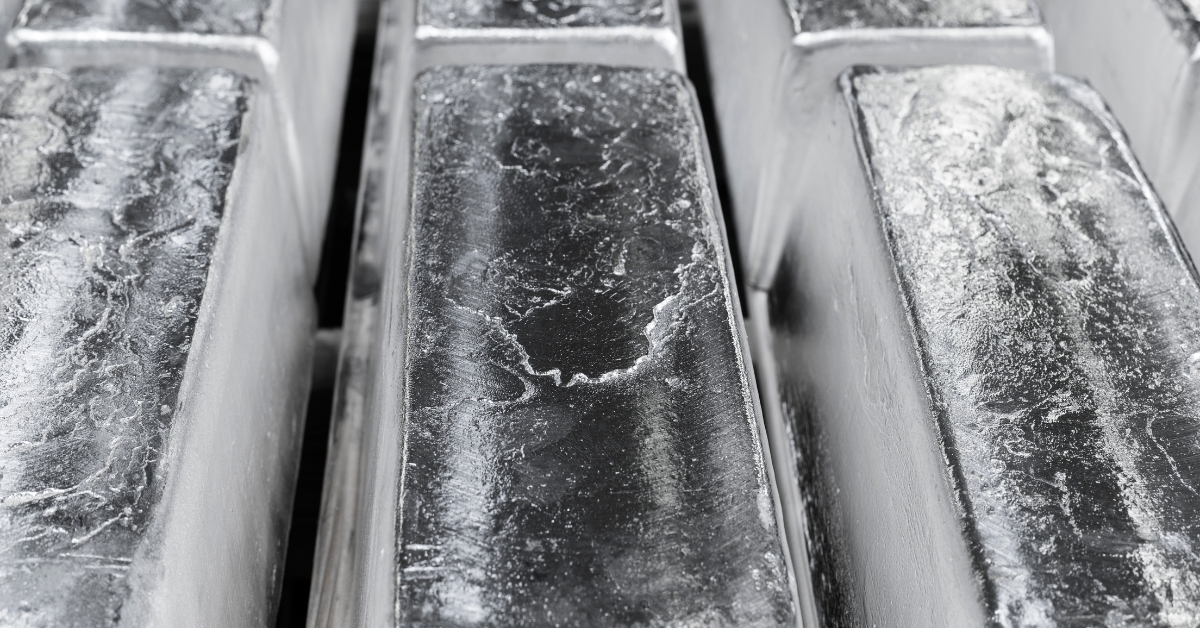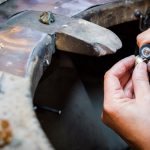Over the centuries, silver has been used for many purposes. From coinage, to jewelry and investment bullion, to more modern uses, ranging from energy generation, to medical imaging and for treating infections.
Different types of European silver alloys exist because silver by itself is a somewhat soft and malleable metal. It is also not currently possible to find or produce 100% pure silver, with 99% (or 999 on the 1000-point millesimal fineness scale) being accepted as “pure silver.” In this near-pure form, it’s tarnish resistant and more valuable, but easily susceptible to wear and durability issues. Combining it with other metals makes it stronger to serve specific functions. Copper is the most common metal used to produce silver alloy, but more modern alloys like Argentium Sterling Silver have been developed to improve the strength of the metal and make it more tarnish resistant.
A Closer Look at European Silver Types
Over time, various European countries have adopted naming conventions for their silver alloys. The main difference between each country’s silver type is its level of purity. We mentioned the millesimal fineness scale previously, which is a system many countries use to denote a precious metal’s level of purity.
As an example, Sterling silver has a millesimal fineness of 925, meaning the alloy is 92.5% pure, with the remainder being made up of additional metals, usually copper.
Across Europe, we find silver at varying degrees of millesimal fineness. Below, discover some of the most common types and a little bit about their history.
Britannia Silver
Millesimal Fineness: 958
Britannia silver has an interesting history as its origins are a result of the English Civil War from 1642 – 1651. During that time, much of England’s silver was melted down to pay soldiers to fight. The practice of melting silver down and the resulting shortage and dilution continued for decades, until 1697 when William III banned the melting or clipping of Sterling Silver (92.5%) and introduced a new standard of 95.8% for any new silver objects that were to be created.
This new standard had a few unintended positive effects, one being that the higher level of purity made it easier to craft objects from. Additionally, it made it easier to export. Sterling silver at the time was below France’s legal standard, and the new Britannia silver’s purity was more in line with what was being traded across Europe.
French 1st Standard Silver
Millesimal Fineness: 950
France actually has two standards of silver. French 1st Standard silver is 95% pure, while the second standard falls to 80% purity. From 1797 onwards, both French standards have been hallmarked with the head of Minerva, the Roman goddess of the arts, handicrafts, professions, and war, along with either the number 1 or 2.
Scandinavian Silver
Millesimal Fineness: 925
While the Vikings were known to thirst for silver over a thousand years ago, modern Scandinavian silver has much more recent roots. A hallmarking system was applied to Norwegian silver in Norway in 1891, and a purity standard of 830 was applied in 1892. By 1920, the standard was updated to 925. Today, there are still varying degrees of Scandinavian silver purity, but the most common standard you can expect to find is 925.
German Silver
Millesimal Fineness: 800 – 835
German silver can be more difficult to understand because the naming convention can refer to two entirely different forms of metal alloy. True German silver – silver alloy from Germany with a fineness typically between 800 – 835 — is one variation.
Another form of “German silver” is an alloy that doesn’t contain any silver at all. First known as Nickel silver, it usually contains 60% copper, 20% nickel and 20% zinc. This vastly more accessible and affordable alloy originated in China during the Qing dynasty and was only referred to as silver because of its similar color.
By the late 1700s, the Germans began to improve upon the alloy. When it finally found its way into England, the copper-based alloy had acquired the name “German silver.”
Today, it’s common to find this form of metal in most households. It’s strong and malleable, and easy to apply silver plating.












